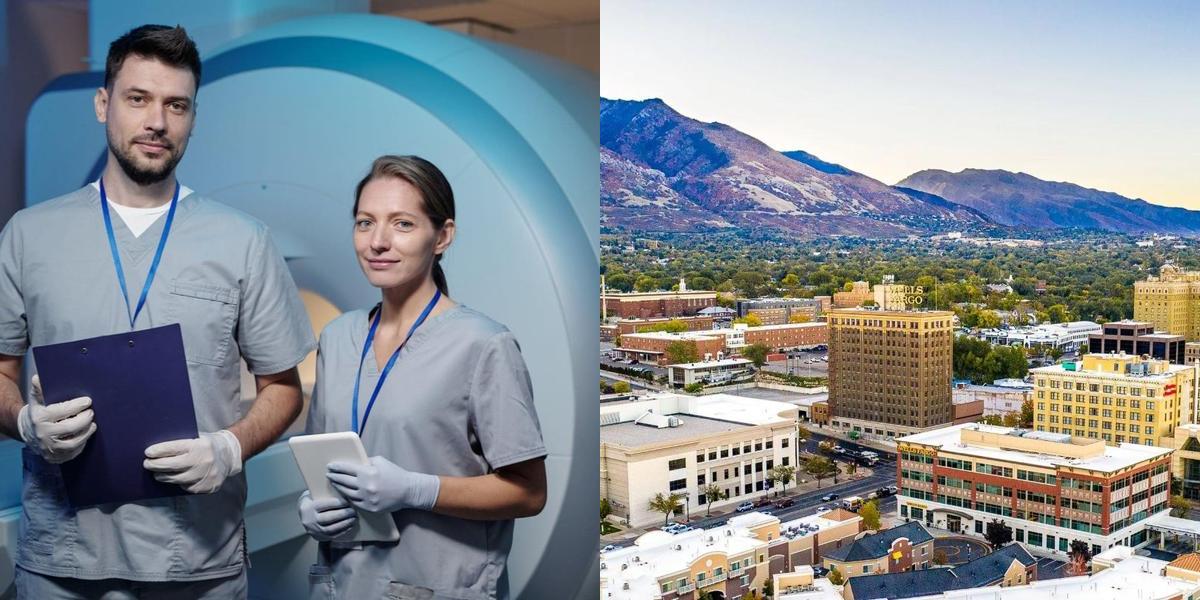How to Become a Radiology Technician in Utah

What is a Radiology Technician?
Radiology technicians, also known as radiologic technologists, are healthcare professionals responsible for performing diagnostic imaging examinations. Their primary duties include operating x-ray, CT, and MRI machines, positioning patients, and ensuring the quality of the images produced.
Article continues after recommendations
Recommended for you
Where does a Radiology Technician Work?
Radiology technicians typically work in hospitals, clinics, physician offices, and diagnostic imaging centers. They may also work in specialized areas such as orthopedics, cardiology, or oncology.
How to Become a Radiology Technician in Utah?
To become a Radiology Technician in Utah, one must first complete an accredited radiologic technology program, which typically takes 2 years. Next, individuals must obtain certification by passing the American Registry of Radiologic Technologists (ARRT) exam. Once certified, they can search for job opportunities in hospitals, clinics, or private practices to start earning a competitive salary.
What are the Requirements to Become a Radiology Technician in Utah?
To become a radiology technician in Utah, you must meet the following requirements:
- Complete an accredited radiology technician program, which typically takes 2 years to complete and results in an associate's degree.
- Pass the American Registry of Radiologic Technologists (ARRT) exam.
- Obtain a license from the Utah Department of Commerce, Division of Occupational and Professional Licensing.
Exploring a Career in Radiology Technician Outside Utah
For anyone looking to become a Radiology Technician but is in a different state, your opportunity to work as a Radiology Technician might be found in District of Columbia, Georgia, Nevada, Oregon, or Wyoming. Should these not be viable options, Dreambound eases the process of discovering and comparing Radiology Technician classes with a search by zip code. With the drive to succeed and the support of resources like Dreambound, anyone can forge a successful path in healthcare, no matter where they are.
How do I Get my Radiology Technician Certification?
To get your radiology technician certification, you must first complete an accredited radiology program and then pass the ARRT exam. The ARRT exam covers topics such as patient care, radiation protection, and image production and evaluation.
Get courses selected just for you
Try our powerful search engine
How do I Get a Job as a Radiology Technician?
To get a job as a radiology technician in Utah, you can search for openings on job boards, network with healthcare professionals, and apply directly to hospitals, clinics, and imaging centers. Many employers also prefer candidates with relevant experience, so consider completing an internship or externship during your training.
Career Paths and Opportunities after Becoming a Radiology Technician
After becoming a radiology technician, you can pursue various career paths and opportunities, such as:
- Specializing in a particular imaging modality, such as CT, MRI, or mammography.
- Advancing to a supervisory or management role.
- Becoming an educator or instructor at a radiology technician program.
- Pursuing additional certifications or education to expand your skills and knowledge.
Final Thoughts
Becoming a radiology technician in Utah can be a rewarding and in-demand career path. By meeting the educational and licensing requirements, you can start a fulfilling career in the healthcare industry, with opportunities for growth and specialization. If you're interested in this field, research accredited programs, prepare for the ARRT exam, and explore job opportunities in your local area.
If this article isn't quite hitting the mark for you, why not give these other articles a try:

Athena is Co-founder and CEO of Dreambound.




